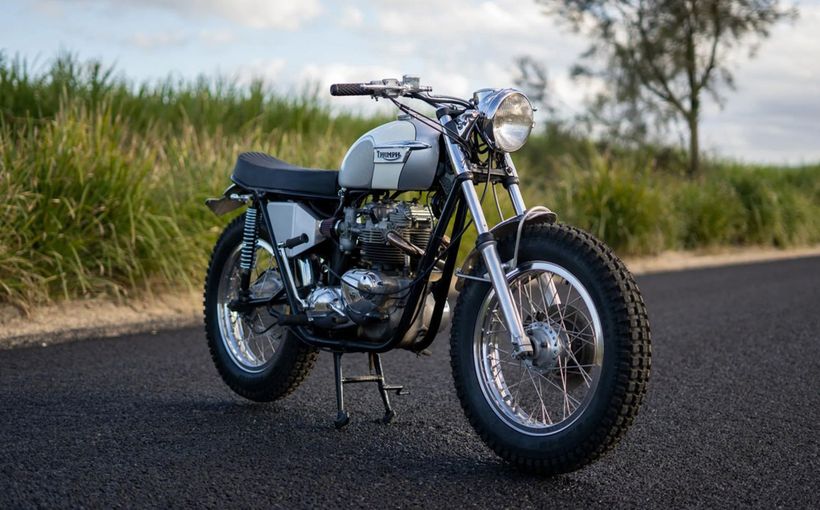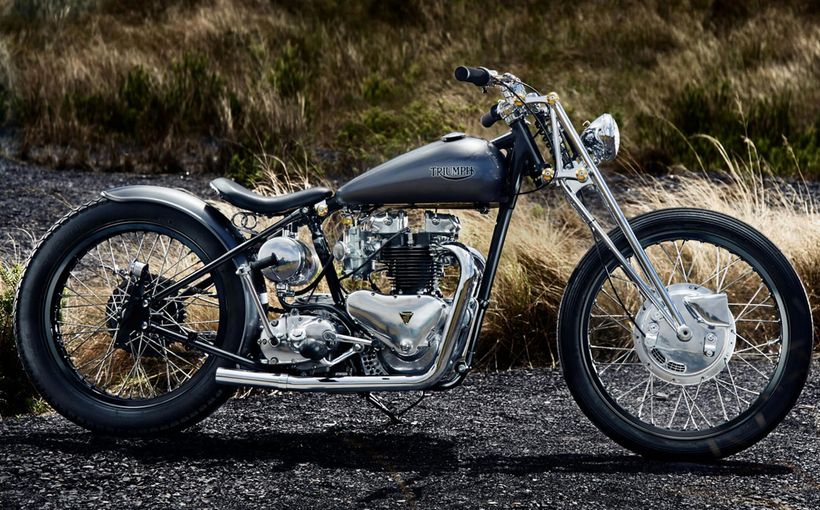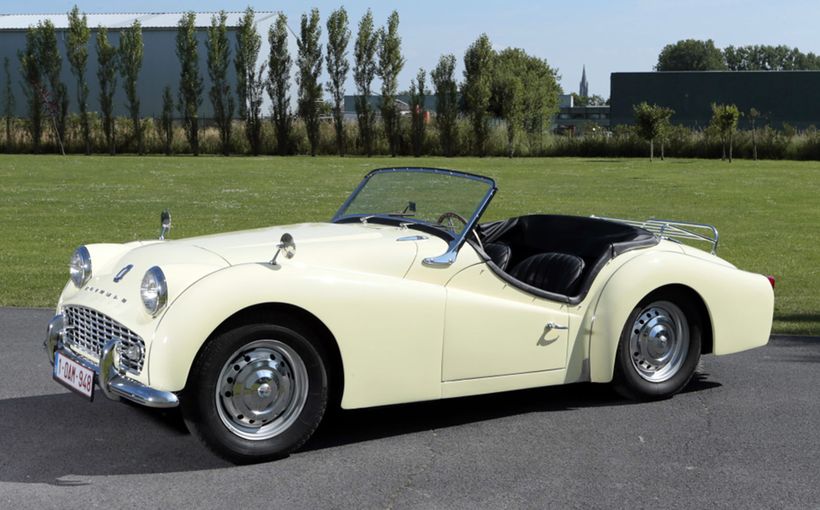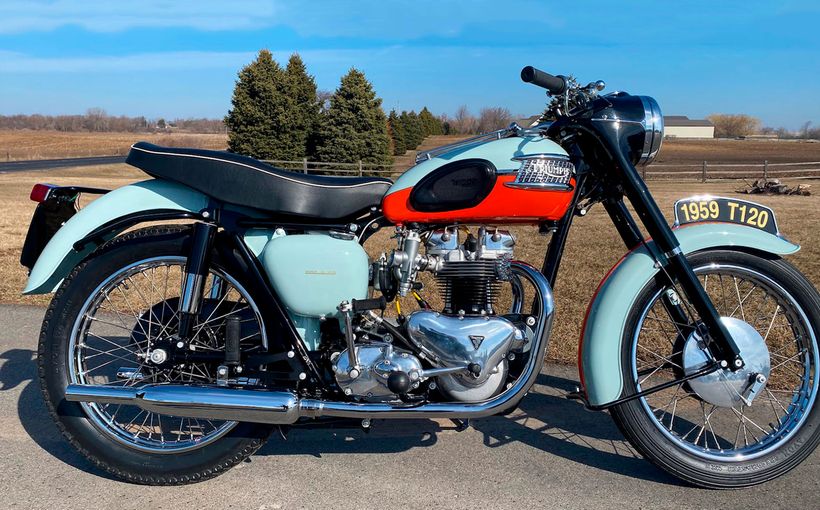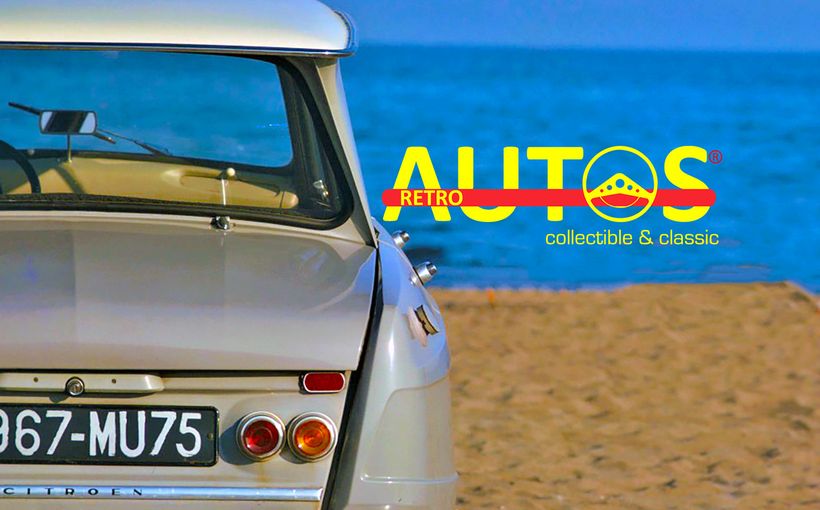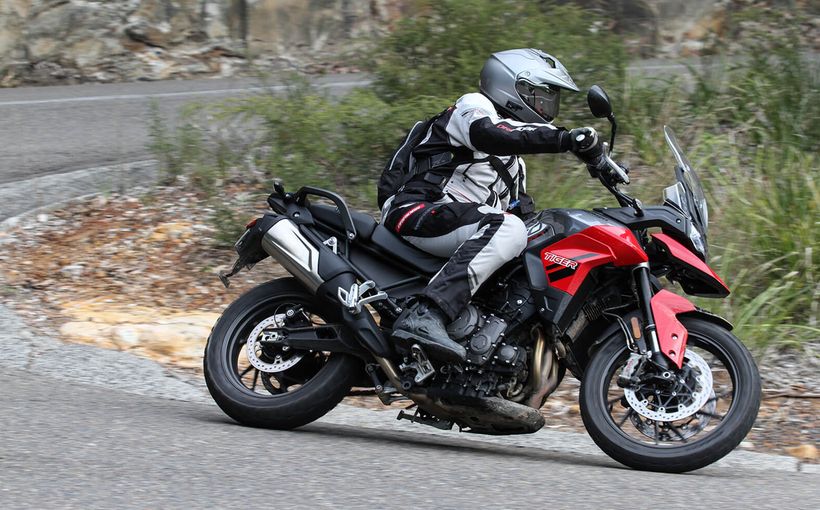1975-1976 Triumph Dolomite Sprint: This Dolomite Needed the Mighty Dollar

The Australian-delivered Dolomite Sprint highlighted everything that was right and wrong about the British industry in 1975-76. Its body was recycled from a tiny 10 year old front drive model powered by a ground-breaking 16 valve engine built in a climate of industrial anarchy, cost-cutting and destructive internal rivalries.
As the collapse of local Leyland operations quickly eliminated the Marina and P76 from local production, Leyland Australia had to move quickly to add more imports to its Australian range. The August 1975 arrival of the Triumph Dolomite Sprint with its unique 16 valve engine and yellow-only livery injected some four cylinder excitement into a range based entirely on updated 1960s models. In a bizarre reversal of the global switch to front drive, the Sprint itself was a rear drive version of a 10 year old front drive model originally conceived as a Triumph Herald replacement.
Leyland Australia press ads in 1975 offered a Jaguar XJ6/12 Series II, the AMI-assembled Triumph 2500 TC, two versions of the Dolomite, the ageing TR6 roadster, the Triumph Stag and the last of the Rover P6B 3500 V8 models. The Range Rover was also making a name for itself after taking several years to reach Australia. And the locally assembled Mini Clubman and Moke faced fierce new competition from Japan.

Full credit must go to Italian designer Michelotti for transforming a stumpy, snub-nosed small car into this beautifully balanced and detailed rear drive sports sedan. It arrived in Australia looking like it was always meant to be this way and stood out in a sea of lookalike rivals.
Of all the passenger cars, the Dolomite Sprint was the freshest and most interesting and an all too rare Leyland bright spot. It was all new to Australians not exposed to its fragmented development that started in 1965.
Almost as suddenly as it arrived, the Sprint had left the Australian market by June 1976, before it could run foul of new ADR27a emissions laws. In just 10 months, the Sprint had generated a profile way beyond its tiny sales, helped along by the exclusive Mimosa Yellow colour (seen on local Triumph Stag and TR6 deliveries but not other local Dolomites) of Australian Sprint deliveries.
The vapour trail left after the Sprint’s short local availability allowed Leyland Australia to keep selling the Dolomite 1850 HL cooking version until 1978. In size and engine capacity, this car was a premium alternative to the Datsun 180B. Of all British Leyland models at the time, the Dolomite Sprint seemed to be the most relevant in this post-energy crisis era.
As BMW went from strength to strength with the new 3 and 5-Series ranges in global markets, Triumph had the badge and the starting points in the Dolomite and 2500 range to go head to head with the German models. In both Australia and the US, plenty of goodwill remained towards Triumph which for local reasons had escaped the worst of British Leyland.
Of extra interest to Australians was the possibility that had the P76 survived, the Michelotti-styled P82 replacement for the local Marina and Dolomite ticked all the boxes for it to be a successful global Dolomite replacement.

This amazing Israeli shot of the original FWD Triumph 1300 revealed in 1965 highlights how tiny it was against the small Renault Dauphine while maintaining a close styling relationship with the much bigger Triumph 2000. Note the tall bonnet line and protruding hubcaps dictated by the offset of the front drive rims. (Photo from Israel.commons.wikimedia.org)
A Heritage That No One Could Make Up
Triumph’s purple patch started in 1961 after a cashed-up Leyland began the replacement or upgrade of the entire Triumph range. The Triumph 2000 saloon, which drew on early Michelotti proposals for a Triumph Herald replacement, established a new Triumph look and nomenclature based on engine size.
Following the successful launch of the 2000, Triumph returned to the replacement Herald project by which time BMC had established front drive as the way of the future with the Mini and Morris 1100. Meanwhile, the rear drive Herald had established a record tight turning circle (25ft/7.6m), a big hit with urban buyers and impossible to achieve with the BMC front drive layout.
The BMC practice of the engine and gearbox sharing the same oil also ran against the grain of Triumph engineers. To address both issues, Triumph developed its own front drive layout by leaving the Herald engine where it was for a rear drive car and placing the transmission underneath it facing forward with its own oil supply and the differential sitting under the front of the engine. A certain Swedish company would soon adopt a similar layout after a brush with Triumph!
Following a Herald sales recovery (but not in Australia where the Herald was replaced by the Toyota Corona), it stayed in production and Triumph’s new small car was delayed until January 1966. Badged as the Triumph 1300, it was now a premium Herald alternative with a luxury wood-trimmed interior closer to the 2000. In detail, it looked like a scale model of the 2000. In profile, it looked more like a smaller version of the Austin 1800 with its tall bluff front and short boot.
Michelotti had to give it a high scuttle line to house the Herald’s pushrod engine sitting over a transaxle. Within seven years, it was ideal for a powerful 2-litre engine capped by a massive 16 valve head and overhead camshaft.
Applying lessons from the 2000, the 1300 had a stiff unitary shell with extra strength around the front structure to house the compact drive train. The strut-type spring and damper mounts were part of a double wishbone front end, not MacPherson struts as on the 2000, to create a path for the drive shafts. At the rear, there were semi-trailing arms similar to the 2000 but no driveshafts.

The 1970 Toledo used the original Triumph 1300 body and engine with a facelifted nose but switched to rear drive to cut costs and complexity so it could meet the growing demand for a cut-above repmobile. Note rear drive rims with less offset. (Photo from simoncars.co.uk)
By 1970, the Herald had seen better days and this is when things turned weird.
Spen King from Rover was given the job of preserving the Herald and 1300 model coverage with one model range based on the front drive 1300 facelifted by Michelotti. The top shelf front drive 1500 replaced the 1300 with a new four headlight front and a long boot to protect its exclusivity. The Dolomite body as introduced to Australians in 1975 was first launched as a 1500 front drive model in 1970!
New two and four door versions of the 1300 body, with a single rectangular headlight version of the 1500 front combined with the old 1300’s short boot, was launched as the Toledo. It was the new Herald for the upwardly mobile company car driver. Powered by the 1300 engine, it was given rear drive to keep it cheap!

The Dolomite shape first appeared as the front drive 1970 Triumph 1500 to replace the front drive 1300 that had been turned into the rear drive Toledo. All quite confusing hence the notice in this car’s windscreen but the distinctive front drive wheel offset of this car gives the game away. (Photo from simoncars.co.uk)
A “dead” beam axle replaced the semi-trailing arms of the front drive 1500. The cheaper rear drive Toledo could then feature a “live” beam axle rear end.
Buying the rear drive version to save money is bizarre in today’s context. Something had to give but not before this duplication prompted Toledo and 1500 bodies to be pressed in different geographical locations. They shared most panels before entering parallel but very different final assembly processes. The British Leyland disease had taken hold.

As Saab prepared to build its own version of the Triumph-developed and supplied 1.7-litre SOHC engine, the front drive Triumph 1500 body was adapted to create a top shelf rear drive Dolomite range powered by a new 1.85-litre version of this engine. Intended for a 1970 release, Leyland strife delayed deliveries until 1971 so the presentation was already five years old by the time it reached Australia.
The Saab Assignment
The short story was that Saab’s two stroke engines were too smoky and the gruff V4 engines purchased from Ford left Saab exposed. Saab approached British engineering consultancy Ricardo to develop a new engine for the coming Saab 99. To save money and time, Ricardo suggested Saab should look at Triumph’s new compact 45 degree inclined single overhead cam four under development for Triumph’s preferred longitudinal engine over transmission front drive layout.
Saab paid for its final development, Triumph manufactured it. Saab was given exclusivity for several years. A new mid-size Triumph 1.7-2.0-litre model was looking less likely as more companies joined the British Leyland fold. Saab changed the 95’s earlier engine ahead of transmission layout to engine over the transmission for the 99, similar in principle to the Triumph FWD layout.
As Saab prepared to build its own version by 1972, Triumph moved quickly to keep its only modern engine alive by increasing the bore of the 1.7-litre Saab version to generate a new 1.85-litre Triumph engine for a 1971 release. It was a relatively short step to then increase the bore to 90.3mm for a 1998cc version. Saab replicated both increases.
This switch from Saab engine supplier to engine builder for the Triumph range at least partly explains why the Stag was given a brand new V8 hastily developed by combining two of these fours instead of picking up Rover’s proven 3.5-litre V8 which by now was also a Leyland engine. The same engine allowed the TR7 to appear with a sleek wedge front more consistent with a mid-engine layout than a front engine-rear drive model.

This inside view of the first Dolomite shows how the much bigger 1850 engine was slotted into the tall but short engine bay of the tiny 1300 front drive model. Triumph large car appointments were crammed into the tight cabin. Although a well-located live rear axle replaced the semi-trailing arms of the early 1300, suspension travel was limited. (Photo from betterparts.org)
The Dolomite Range
Although Triumph’s front drive 1500 range was as popular as ever, the duplication of drivetrains following the Toledo’s release could not continue.
Spen King knew that the range had to go all front drive or all rear drive. He also knew Triumph would never get the money for a new mid-range model to compete against the half-size bigger Cortina TC/Mk III, Vauxhall Victor and Chrysler 180 (Centura).

For the 1300, the Triumph Herald engine was angled above the gearbox with the driveshafts connected to the diff at the front. It left room for a much bigger engine on its own. Note the rubber couplings similar to those used by Lotus and extensive shock reduction measures that made the 1300 the most refined front drive small car of the era.
He is credited with a brilliant piece of product planning after he re-engineered the rear drive Toledo package to take the Saab engine as soon as it became available to Triumph. With 1854cc and twin-Stromberg side-draught carburettors, it delivered a useful 91bhp/68kW in a fairly stiff and compact shell originally designed for the Triumph 1300. Presenting this new overhead cam engine as part of a new rear drive sports sedan range under Triumph’s famous Dolomite badge was an astute move.
For the bigger engine, the suspension was stiffened including the four link coil-spring live rear axle which featured angled upper links that almost formed an A-frame at the axle centre. What the body lacked in size, the extra agility and sports sedan feel more than compensated. After various driveline shock countermeasures were built into the rear drive driveline, it lost none of the refinement of the smaller FWD models.
After the new Dolomite range was packaged with the previous 1500’s four-headlight front and extended boot, it was hugely successful from launch. The rear drive Toledo continued as the 1.3-litre Herald replacement. The front drive 1500 then marked the end of Triumph’s front drive range as it was replaced by the rear drive 1500TC. All later joined the Dolomite range rebadged as the Dolomite 1300, 1500 and 1500 HL. King had finally unravelled it all.
A 2-litre twin-cam version was intended to take on top end rivals including the Fiat 132, BMW 2002 and the new Alfetta range. The steady demand for the Sunbeam Rapier, Humber Sceptre and the Cortina-Lotus MK II convinced King there was room for a new British contender.

Sprint’s ground-breaking wide-angle 16 valve cross-flow head with only a single overhead cam used the same cam lobes to open and shut the inlet and exhaust valves. Note dual-row timing chain of this engine family hastily divided into one per bank of the Stag V8 with predictable results. A 4-litre Stag or TR7 V8 with dual row timing chains and Sprint heads would have been good for at least 300bhp. It was a wonderful lode of engine technology never exploited under the Leyland disease.
After the twin-cam idea was dropped on complexity and cost grounds, the vision of combining a single overhead camshaft with 16 valves is credited to one of Triumph’s own engine group. Big names in the British cylinder head world including Harry Mundy and Coventry Climax are also linked to the final exploitation of the 16 valve breathing that the new layout allowed.
The key to its simplicity was to use the same eight cam lobes that operated directly on the bucket tappets of each pair of inlet valves to also activate the opposing pair of exhaust valves. A clever rocker arm system that reached across the head made it work. Although this design dictated the same cam grind for both inlet and exhaust valves, where the rocker arm contacted the cam lobe, the location of the rocker arm’s pivot point and the angle between the outer points of the rocker arm allowed variation in lift and timing.

Sprint engine’s 45 degree incline left plenty of room for big SU carburettors and long inlet tracts for low speed flexibility and high-revving performance. Note pioneering cold-air inlet ducting fitted to most 1960s Triumphs but often replaced by owners with pancake filters who had no idea of what it was for.
The 45 degree engine incline, the wide cross-flow head design and deep centre plug layout left the head looking more like an overhead cam version of one bank of a Chrysler Hemi V8. Often claimed to be the world’s first mass-produced 16-valve four cylinder engine, this is sometimes disputed. That nothing like it at this level had ever been seen before is beyond dispute.
The boost in power was massive and its competition potential compelling.

Forward position of large engine in such a small car made understeer the natural handling stance but easily balanced by power oversteer. Front and rear anti-roll bars and short rear suspension travel made optional limited slip diff desirable to counter rear wheel lift and loss of traction. It was so much fun the Sprint was seen as a Cooper S replacement.
Defining the Sprint Package
Early Sprint engines delivered an impressive 150bhp (DIN, not inflated Aussie or Japanese Gross figures) but this was pegged to 127bhp/95kW as Leyland assembly and quality were not consistent enough to guarantee that figure for every engine. The bottom line was that the buyer was given the ingredients to create a 2-litre four with 150 real bhp or 112kW in today’s terms, after little more than careful assembly and blueprinting.
Although the entire car weighed only 1025kg, it was still slightly heavier than a BMW 2002 and about the same as the later but larger 320. Missing was a list of upgraded engine internals that would normally accompany a power boost from 68 to 95kW.
The old 1300’s tall engine bay and the engine’s 45 degree angle allowed two whopping HS6 SU carburettors with unusually long inlet tracts just like the slant six Valiant engine. The effect was the same with most of the 122lb/ft/165Nm of torque available from just 2000rpm, ready to be exploited by the Laycock de Normanville J-type overdrive on 3rd and 4th gears attached to the end of the heavy duty 2.5PI/TR6 gearbox. A free-flowing dual exhaust system enhanced the heavy breathing for an engine just as happy hauling to 6500rpm as it was cruising on minimal fuel just above 2000rpm.
Launched during the second half of 1973 in the UK, it was perfectly timed for the first oil crisis. As would be repeated in Australia two years later, the British Sprint was launched in Mimosa Yellow only, an unusual yellow that should be familiar to Australians for reasons not widely known.
Australia’s Acacia Dealbata tree known locally as silver or blue wattle was widely introduced across Europe’s Mediterranean regions where it is known as Mimosa. Sprigs of Mimosa flowers are given to women on International Women’s Day in Italy and several Eastern European countries.
It is ironic that a new high performance model already affectionately known as the Dolly by 1975 by the time it was exported to Australia, arrived in a colour inspired by the flowers of an Australian plant highly symbolic for European women. Sprints were painted in other colours later but not in Australia.
Side stripes, black vinyl roof, black tail panel and front spoiler were all standard on the Sprint adding attitude to the innocuous early 1500 body. Yet there was more to the Sprint than an engine and a paint scheme.

Intricate detailing of the Sprint could help a proud owner forgive the many quality and assembly glitches that came with a Sprint built during the worse days of British Leyland. Puddle under engine was a given with headgasket and rocker cover leaks.
When handling this much grunt, the Sprint’s tough old Triumph manual gearbox and heavy duty TR6 differential (with optional limited slip) were usually joined after the diff was isolated and statically located as part of an IRS system, not a live axle. The Sprint was given a two-piece tail shaft with a rubber-isolated centre bearing and a set of CV joints instead of the usual Hooke joints to cut vibration under load.
Suspension was tied down considerably with anti-roll bars front and rear. Turning circle was typically Triumph tight at 31ft/9.4m.
For a little car, the 5.5 inch rims with 175/70HR13 Dunlop SP Sport tyres were a healthy combination. The Wheels November 1975 road test noted Goodyear G800 Grand Prix tyres on the test car. The Sprint’s fancy GKN alloys were Britain’s first factory fit alloys and a departure from the Rostyles found on British cars with sporting aspirations.
The new 13 inch alloys left no room for a big brake upgrade, so the rear drums stayed but grew in size and the front discs relied on harder pad material and a bigger booster for better stopping power.

Sprint cabin was tight but as lavish as the Stag and later top level Triumph 2500S with corded nylon trim soon adopted by Australian industry. Tilt and reach adjustable steering column was still an unusual feature. (Photo from classiccarshq.co.uk)
Inside, it was the best of Triumph: a dash inspired by the Mark II 2000/2500 and Stag with the usual lashings of wood, carpet, storage shelves and pockets, armrests and soft seat trim, in this case, a new corded Bri-nylon that had some chance of surviving the Aussie sun. This new European-style cord trim, seen also on Recaros fitted to Porsches and other European models, was soon embraced by the local industry as a luxury upgrade over vinyl.
Seat cushion height adjustment, tilt and reach adjustable steering column, clock, heated rear window, sports steering wheel similar to the upper level 2.5 PI and Stag items, flow-through face level ventilation and overdrive switch in the gear knob were all part of the Australian Sprint deal until local ADRs deleted the seat cushion height adjustment for solid mountings.
The main drawback was the meagre 9.4 cu ft boot, about a third of what you would find at the back of a Valiant. Because Michelotti’s bold 1970 facelift disguised the remnants of the early 1300’s clever FWD packaging, it was easy to forget how small the Dolomite was.
On a wheelbase of just 96.6 in/2454mm with 53.4in/1356mm front and 50.75in/1290mm rear tracks, its footprint was tiny for such a hard-charging 2-litre.
A length of 13ft 6in/4115mm and width of around 5ft/1568mm, skinnier than most skinny Japanese cars, highlighted why it was seen more as an upward move over a Cooper S or Escort Twin Cam than a sideways move from a Rover or Triumph 2000. And that was its big challenge in Australia.

Michelotti’s proposal for a low cost reskin to allow time for an all new Dolomite to be developed was dropped as Leyland collapsed in the UK. Front looked a little too like the facelift Fiat 128 while the Fiat 132 side profile and BMW 5-series rear pillars might have robbed the model of its British character.(Photo from en.wikipedia.org)
The Australian Experience
According to local Sprint experts, Sprintparts Australia, just 620 examples were imported from August 1975 to June 1976. Although Wheels stated that every Sprint from the end of 1975 would be fitted with a limited slip differential, this did not happen according to Sprintparts.
Of the 620 imported, only 49 were fitted with the limited slip diff ex-factory denoted by an “S” on the end of the car’s Commission Number. ADRs dictated front seat head restraints and seat belts front and rear.
The biggest challenge was the Sprint’s local $7700 price tag compared to the $6931 Fiat 132, $8419 BMW 2002, $7001 Alfetta, $7630 Peugeot 504 and $8233 Lancia Beta. While faster than most and more fun to drive, it was really only a four seater and the short rear suspension travel struggled on Australia’s choppier roads.
A top speed of 114mph/184km/h and standing quarter of 17.2 seconds only looked good until it was compared to the XB Falcon GT 351, a well-appointed and rugged point-to-point $7100 bruiser and cruiser. Yet buying the big GT in 1975 under threat of fuel rationing took some courage.
The Sprint’s Triumph 1300 origins placed most of the big new engine ahead of the front wheels for plenty of understeer and weight transfer under braking. Power oversteer on tap kept the handling honest and entertaining but without the promised LSD, the weight transfer and tyre smoke from the short travel rear suspension was a problem. On smooth surfaces, the grip and tied down body were outstanding.
As a compact luxury car, the Sprint’s stiffest competition came from within – the $6510 Triumph 2500TC and the benchmark UK muscle car $8440 Rover P6B 3500S with its hot high compression V8 and manual transmission.

Heavily influenced by Rover thinking, Leyland’s strange SD2 Dolomite replacement was a replacement for the Austin Maxi (and Australian Morris Nomad) and Morris Marina ranges not the Dolomite range. Triumphs were firmly established as a range of classy “three-box” sedan BMW rivals. If Leyland Australia had been left to define the P76 and P82 without interference, Triumph could have had two brand new spin-offs as early as 1977. (Photo from commons.wikimedia.org)
Splitting the Rover and Triumph ranges had become a real headache here and overseas. Despite their 1960s origins, the Sprint and 2500PI/S sedans still had a following as classy three box sedans.
Rover’s original SD2 sedan proposal was the perfect Dolomite replacement. Under convoluted Leyland rationalization to keep the two ranges clear of each other, it could never see light of day. As six-cylinder Rover SD1s replaced the Triumph 2500, small or sporty Rovers would be badged as Triumphs. The Dolomite/Sprint’s long term replacement was to be the oddball Leyland SD2 based on the earlier Rover SD2 sedan proposal after it had been turned into a smaller and uglier SD1.

The Australian Leyland P82 based on this Michelotti proposal would have been the perfect shared platform for local Torana/Cortina rivals and a top-shelf Triumph range. Much closer to how the P76 was meant to look, it was a preview of a later P76 facelift intended to be part of this international Leyland family look.
The Dolomite’s real hope was the P82 range of Leyland’s Australian small cars penned by Michelotti, much closer to the original Rover SD2 sedan. Paired with Michelotti’s original vision for the P76, both models could have appeared as British Triumphs and Australian Leylands with development and costs shared by Triumph and Leyland Australia
Instead, the British Sprint was left to wither on the vine until 1980. As the British Leyland model most likely to survive an oil-crisis market climate timed perfectly for the Dolomite, it was the most neglected and thus robbed of the vital development dollars that Australian and US exports could have generated. Neither the Sprint engine (and its potential inline six and Stag V8 derivatives) nor the Sprint concept itself were ever given the development to match their potential.
After 22,941 Sprints were built, a morally and financially bankrupt British Leyland replaced both it and its fabulous engine with a Triumph-badged Honda sedan derived from the front drive Civic. Those Australians who had seen and loved the Triumph range in all its glory were at least spared from witnessing that travesty.



